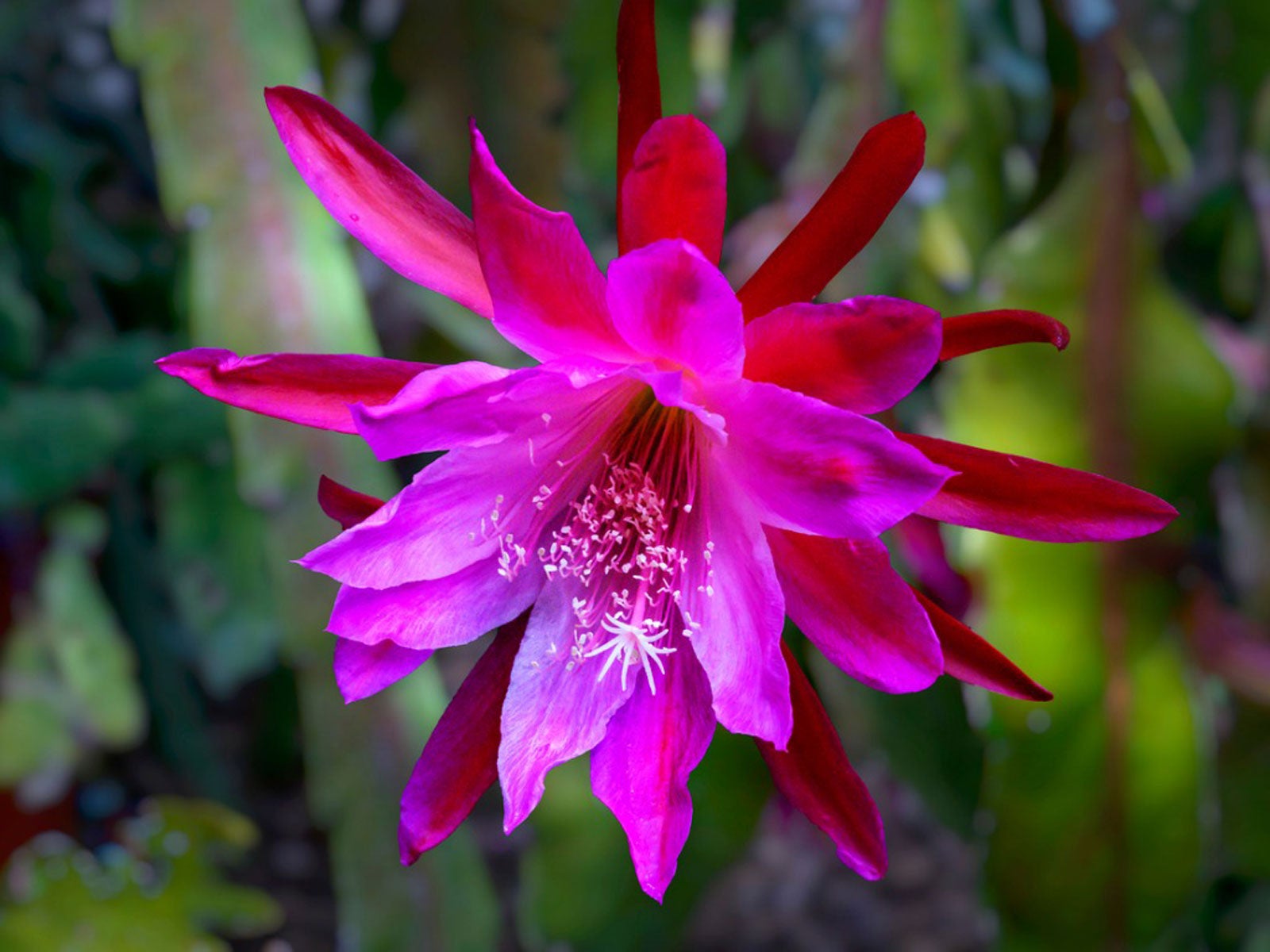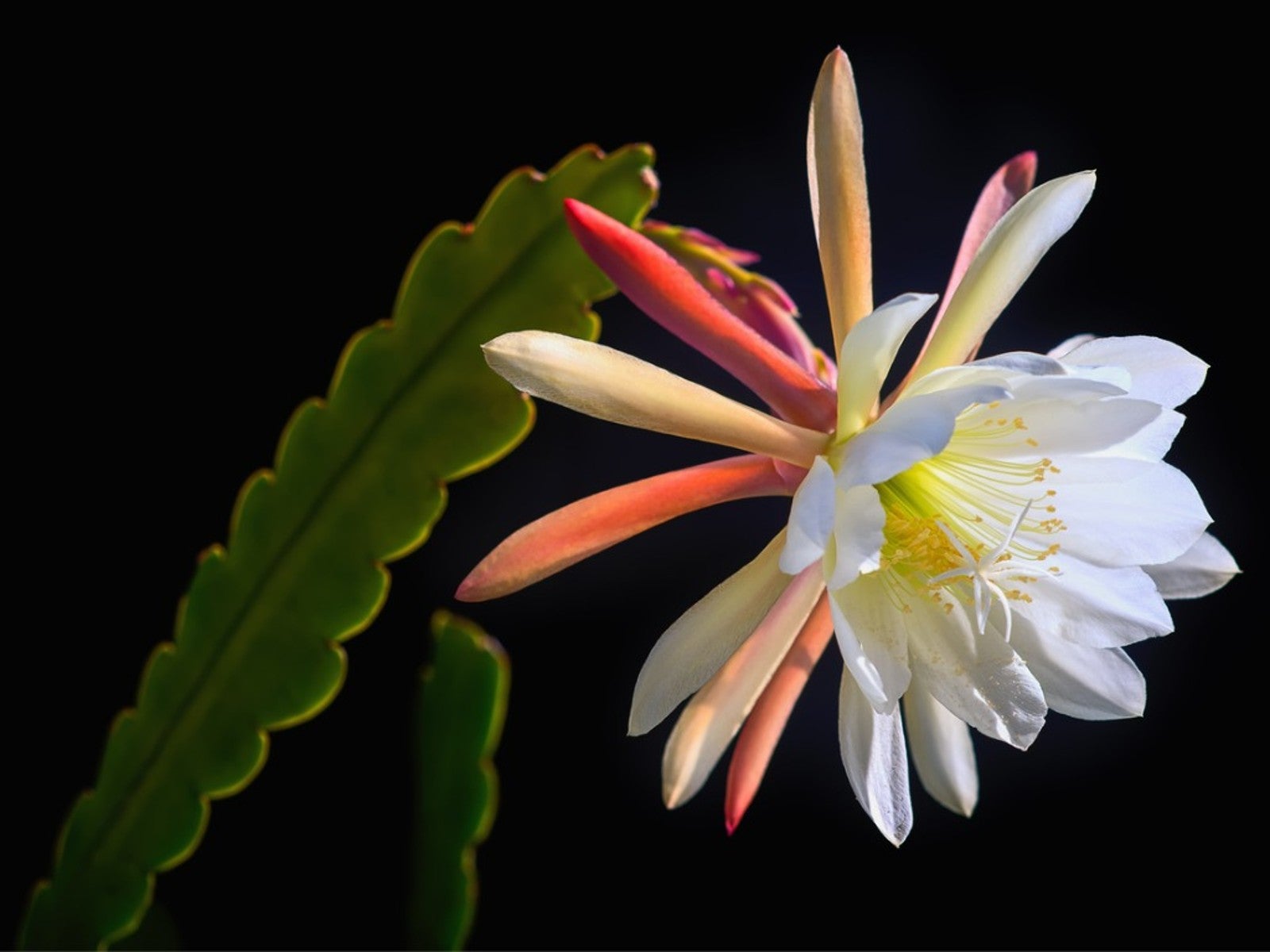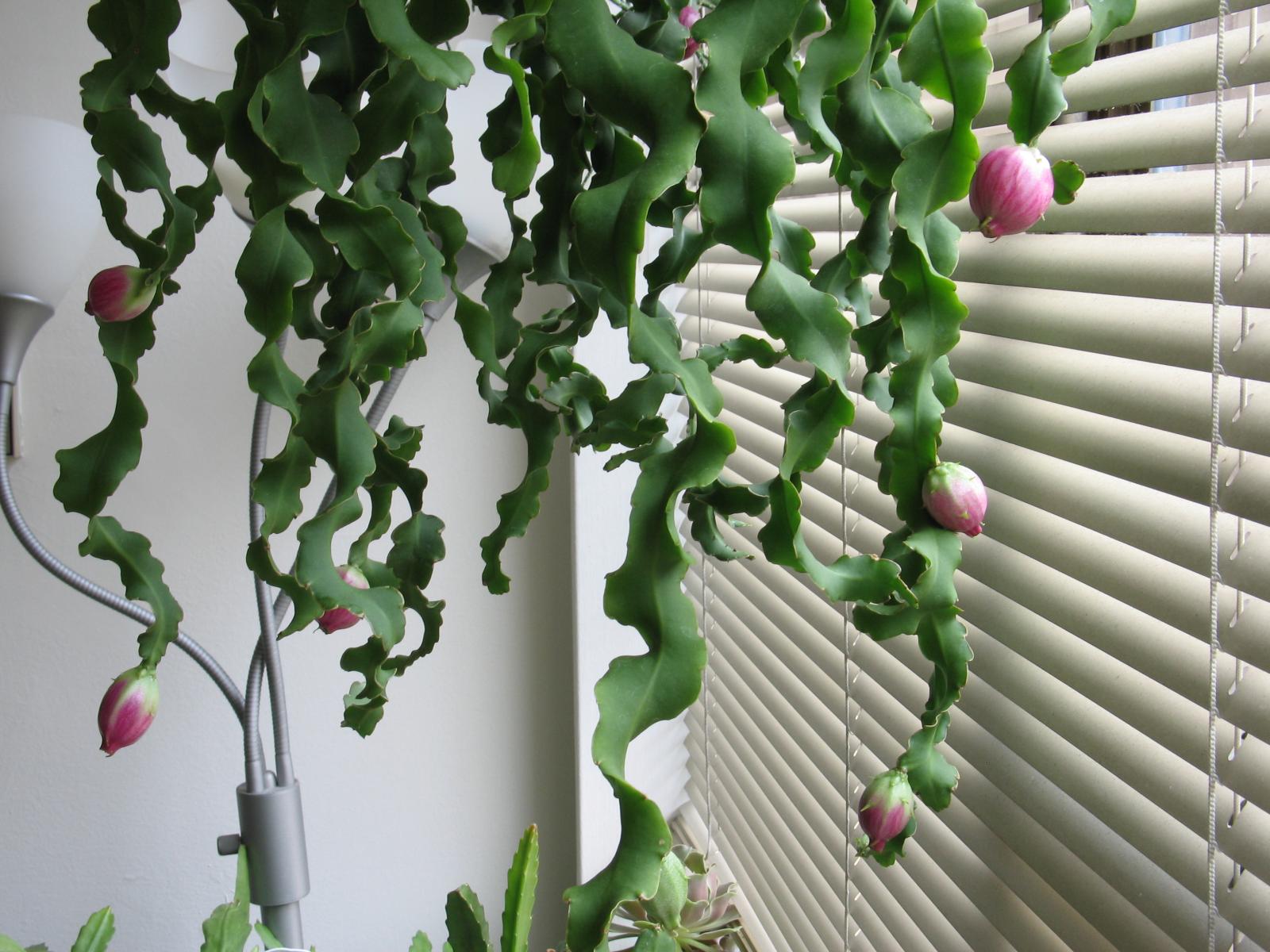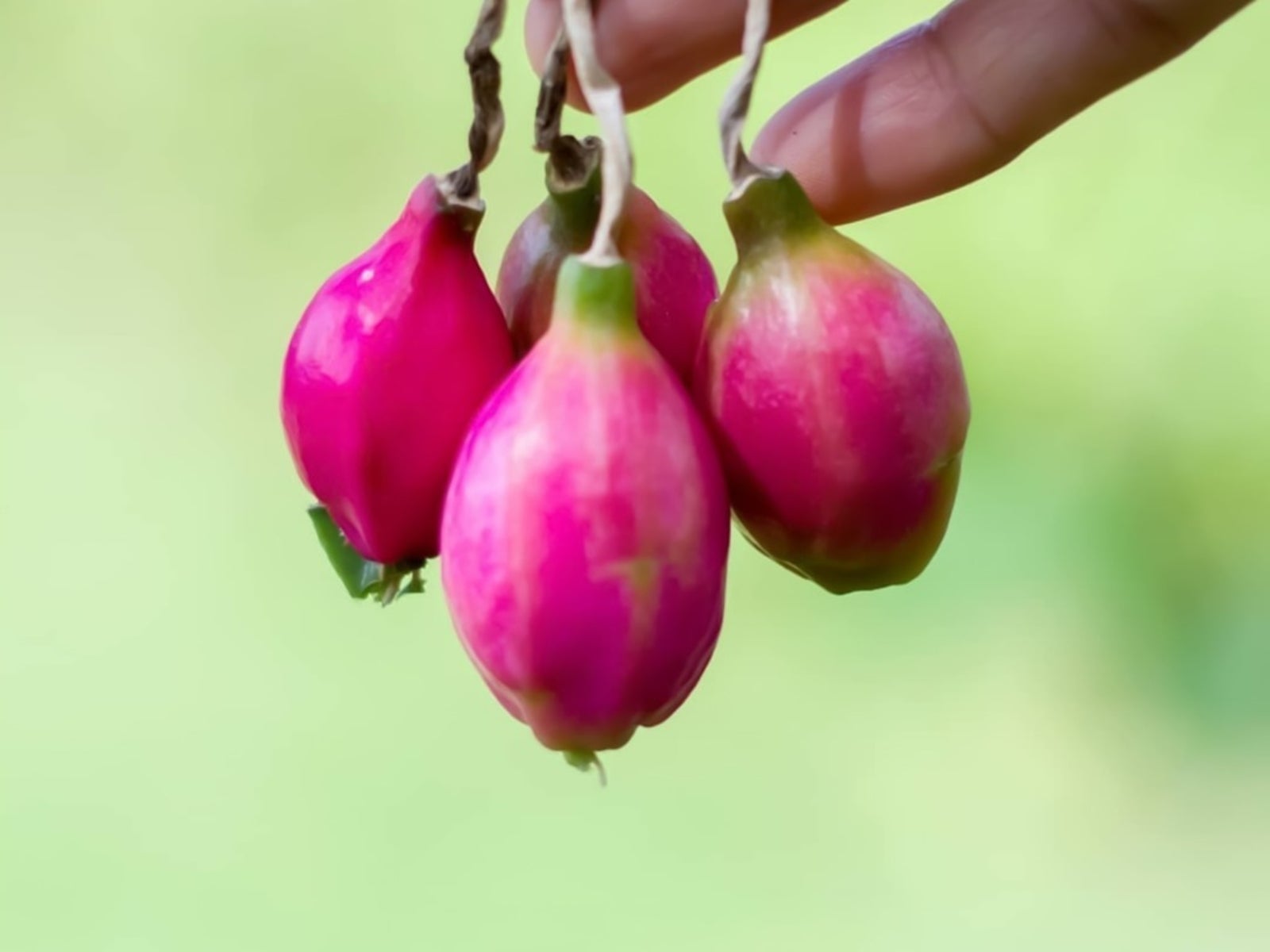Epiphyllum Plant Care: Tips For Growing Epiphyllum Cactus
Look into growing some of the ten species of epiphyllum, or orchid cactus. Find them in garden centers or online, and grow them in much the same way you’d grow an orchid.

Quick Facts:
Botanical name: Epiphyllum spp.
Height: 1 to 2 feet (30 to 61 cm)
Spread: 1 to 2 feet (30 to 61 cm)
Sun exposure: Filtered sun
Soil requirements: Loose, well-drained
Hardiness zones: 10 to 12
Gardening tips, videos, info and more delivered right to your inbox!
Sign up for the Gardening Know How newsletter today and receive a free copy of our e-book "How to Grow Delicious Tomatoes".
When to plant: Year-round indoors
Epiphyllum is a genus of flowering epiphytes native to Central and South America. Also known as orchid cactus, these plants produce brilliant blooms and grow on trees as air plants. In North America, it only makes sense to grow Epiphyllum as a houseplant, like you would an orchid.
Epiphyllum Varieties
There are ten species of Epiphyllum and many hybrids. Some of the types you might find for sale in garden centers or online include:
Epiphyllum oxypetalum Also known as Queen of the Night, this species produces big white flowers that bloom at night.
Epiphyllum chrysocardium This species has toothed leaves and produces white flowers.
Epiphyllum hookeri This is a subspecies prized for its wavy foliage.
“Clown” This is a hybrid cultivar often referred to as Epiphyllum with white and pink blooms.
“George French” This pretty variety produces cheery yellow flowers.
Orchid Cactus Care
Provide the right conditions for an Epiphyllum plant and it will thrive as an unusual houseplant.
Light
Epiphyllum grow in the filtered light of jungle trees. Provide partial shade or filtered and indirect light. Plants can tolerate some direct morning light.
Water
Do not let Epiphyllum roots and potting mix dry out entirely. On the other hand, overwatering is a surefire way to kill it. Water when the top third of the mix is dry.
Temperature & Humidity
Epiphyllum grow in hot conditions. They will not tolerate freezing or lower temperatures. However, to force blooms in early winter, let them sit somewhere with cooler temperatures (50 to 60 degrees Fahrenheit, or 10 to 16 Celsius) for a few weeks.
Soil
As an air plant, orchid cactus should not be grown in soil. A cactus or succulent mix is a good choice.
Fertilizer
Use a balanced, liquid fertilizer regularly through the growing season. At the start of flowering in late fall or early winter, switch to a 2-10-10 fertilizer.
Problems, Pests & Diseases
If grown indoors, pests are not an issue with Epiphyllum. Watch out for slug and snail damage if grown outside. Rot and fungal diseases are common issues associated with overwatering.
How to Plant Epiphyllum
Epiphyllum is best grown in containers indoors in most locations. Use a container that drains very well and a potting mix that is very loose and will drain. While Epiphyllum love moisture, too much is deadly.
Pruning
Stems of Epiphyllum plants can get long. You can trim them back to maintain a certain size. Pruning the stems will also create new shoots and a fuller plant. Remove flowers after they have faded.
Orchid Cactus Propagation
Epiphyllum are easy to propagate by cuttings. Remove a stem and cut it into sections. To minimize the risk of rot, let the cuttings sit in a cool, dry spot for a few days. Place the cuttings in the potting mix to root. Mist the cuttings only for the first two weeks, then begin to water them lightly.
Repotting
Repot an orchid cactus when the roots begin to show in the bottom of the container. Choose a new pot that is just a little bigger than the original.
Overwintering
When growing Epiphyllum as houseplants, they need less care in winter. Reduce watering and fertilizer.
How to Make Epiphyllum Flower
Epiphyllum need a cool period to flower in winter. At the start of winter, place your plant in cooler part of the house, like a basement or even the garage, for a couple of weeks. Avoid locations that will be colder than 40 degrees Fahrenheit (4.4 Celsius). They also prefer to be slightly rootbound to flower.
Frequently Asked Questions
When Do Epiphyllum Bloom?
Epiphyllum bloom in the winter and spring, depending on the species. Look for flowers between November and June.
How Long Do Epiphyllum Flowers Last?
Depending on the species and conditions, an Epiphyllum’s flowers might bloom for a few days or a week. They last longer in cooler temperatures.

Bonnie Grant is a professional landscaper with a Certification in Urban Gardening. She has been gardening and writing for 15 years. A former professional chef, she has a passion for edible landscaping.
-
 Looking For Plants To Give You The Soft And Fuzzies? Try These 5 Fuzzy Leaf Plant Options
Looking For Plants To Give You The Soft And Fuzzies? Try These 5 Fuzzy Leaf Plant OptionsLovers of texture, drama, silver foliage and tactile plants will adore these special sensory garden additions. These fuzzy leaf plant options will leave you all aglow
By Susan Albert
-
 Get Ready For A Summer Of Hummers! Grow These Full Sun Hummingbird Plants and Flowers
Get Ready For A Summer Of Hummers! Grow These Full Sun Hummingbird Plants and FlowersIf you’re lucky enough to enjoy a sunny backyard, make sure you are maxing out on your pollinator opportunities and grow these full sun hummingbird plants and flowers
By Tonya Barnett
-
 Epiphyllum Varieties: Types Of Cactus Orchid Plants
Epiphyllum Varieties: Types Of Cactus Orchid PlantsEpiphyllum are the gems of the cactus world. Commonly called orchid cactus, they produce absolutely stunning flowers. Click to learn more.
By Bonnie L. Grant
-
 Epiphyllum Cactus Info – How To Grow Curly Locks Cactus
Epiphyllum Cactus Info – How To Grow Curly Locks CactusCurly locks has curly, curved stems which are the result of a mutation. If you know someone with the plant, it is easy to learn how to grow curly locks from stem fragments. This article will help get you started.
By Bonnie L. Grant
-
 Epiphyllum Seed Pods: What To Do With Pods On Epiphyllum Plant
Epiphyllum Seed Pods: What To Do With Pods On Epiphyllum PlantEpiphyllum cactus have lovely flowers, which turn into a chubby little fruit filled with tiny seeds. Growing Ephiphyllum seeds will take some patience but it is a rewarding endeavor that will give you more of these beautiful plants. This article will help.
By Bonnie L. Grant
